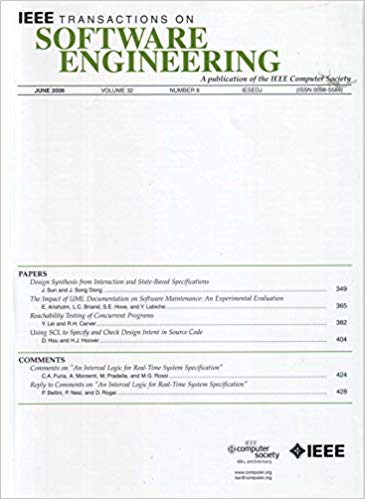用创新的方法调用突变丰富突变测试:填补拼图中缺失的关键部分
IF 5.6
1区 计算机科学
Q1 COMPUTER SCIENCE, SOFTWARE ENGINEERING
引用次数: 0
摘要
突变测试的目的是模拟真实世界的缺陷,但是现有的工具常常难以准确地复制方法调用缺陷。为了解决这个问题,我们提出了MIN(方法调用mutator),它使用映射策略将方法名与相应的值配对,确保方法共享参数和返回类型。该方法通过考虑库方法、访问控制、继承和静态方法等因素,增强了突变体的可行性和真实感。实验结果表明,将MIN集成到Major(一种流行的突变工具)中,与真实缺陷的语义相似度提高了11%,突变集多样性提高到97.5%,未检测到的故障减少了38.5%。此外,MIN的性能可以与最先进的基于机器学习的突变器(如CodeBERT)相媲美,在生成可编译的突变体方面,MIN的速度比CodeBERT快10倍,比DeepMutation快4倍。这些结果表明,MIN可以显著增强缺陷模拟,提高突变检测的效率。本文章由计算机程序翻译,如有差异,请以英文原文为准。
Enriching Mutation Testing With Innovative Method Invocation Mutation: Filling the Crucial Missing Piece of the Puzzle
Mutation testing aims to simulate real-world defects, but existing tools often struggle to replicate method invocation defects accurately. To address this, we propose MIN (Method INvocation mutator), which uses a mapping strategy to pair method names with corresponding values, ensuring that methods share argument and return types. This method enhances the feasibility and realism of mutants by considering factors such as library methods, access control, inheritance, and static methods. Experimental results show that integrating MIN into Major (a popular mutation tool) improves semantic similarity to real defects by 11%, increases mutant set diversity to 97.5%, and reduces undetected faults by 38.5%. Furthermore, MIN’s performance rivals that of state-of-the-art machine learning-based mutators like CodeBERT, with a 10x speed advantage over CodeBERT and 4x over DeepMutation in generating compilable mutants. These findings demonstrate that MIN can significantly enhance defect simulation and improve the efficiency of mutation testing.
求助全文
通过发布文献求助,成功后即可免费获取论文全文。
去求助
来源期刊

IEEE Transactions on Software Engineering
工程技术-工程:电子与电气
CiteScore
9.70
自引率
10.80%
发文量
724
审稿时长
6 months
期刊介绍:
IEEE Transactions on Software Engineering seeks contributions comprising well-defined theoretical results and empirical studies with potential impacts on software construction, analysis, or management. The scope of this Transactions extends from fundamental mechanisms to the development of principles and their application in specific environments. Specific topic areas include:
a) Development and maintenance methods and models: Techniques and principles for specifying, designing, and implementing software systems, encompassing notations and process models.
b) Assessment methods: Software tests, validation, reliability models, test and diagnosis procedures, software redundancy, design for error control, and measurements and evaluation of process and product aspects.
c) Software project management: Productivity factors, cost models, schedule and organizational issues, and standards.
d) Tools and environments: Specific tools, integrated tool environments, associated architectures, databases, and parallel and distributed processing issues.
e) System issues: Hardware-software trade-offs.
f) State-of-the-art surveys: Syntheses and comprehensive reviews of the historical development within specific areas of interest.
 求助内容:
求助内容: 应助结果提醒方式:
应助结果提醒方式:


